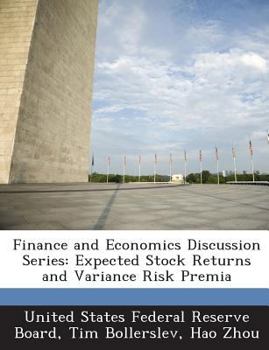Finance and Economics Discussion Series: Expected Stock Returns and Variance Risk Premia
We find that the difference between implied and realized variances, or the variance risk premium, is able to explain more than fifteen percent of the ex-post time series variation in quarterly excess returns on the market portfolio over the 1990 to 2005 sample period, with high (low) premia predicting high (low) future returns. The magnitude of the return predictability of the variance risk premium easily dominates that afforded by standard predictor variables like the P/E ratio, the dividend yield, the default spread, and the consumption-wealth ratio (CAY). Moreover, combining the variance risk premium with the P/E ratio results in an R 2 for the quarterly returns of more than twenty-five percent. The results depend crucially on the use of "model-free", as opposed to standard Black-Scholes, implied variances, and realized variances constructed from high-frequency intraday, as opposed to daily, data. Our findings suggest that temporal variation in risk and risk-aversion both play an important role in determining stock market returns.
Format:Paperback
Language:English
ISBN:1288708858
ISBN13:9781288708857
Release Date:February 2013
Publisher:Bibliogov
Length:36 Pages
Weight:0.18 lbs.
Dimensions:0.1" x 7.4" x 9.7"
Customer Reviews
0 rating





